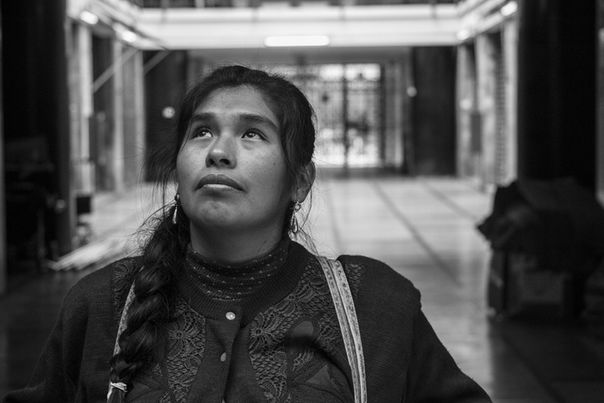Is this what a Latin-American woman deserves?
By Lorenna Rocha

Canção sem nome
Period images and newspaper sheets start Melina León's Canción sin nombre (Peru, 2019). The chosen historical-temporal perspective informs us about the economic crisis and political instability in Peru in the late 1980s, in a post-dictatorial context. The black and white cinematography reflects the process of homogenization of the gaze that the film is unfolding: the village where the plot takes place is explored in its poverty and its history of pain, as the story follows Geo, an Andean woman who is pregnant and has her daughter stolen right after birth. Following the logistics of geographical determinism, the plot points to an excess of suffering between cries and too many doors slamming, that little mobilizes the viewer to feel other emotions towards the main character besides pity. Is this what a Latin American woman deserves?
The melodramatic plot, in its chain of events, resorts to fragility so as to bring more convincing twists in its cause and effect relationships, and also values the mobilization of the plot through the character of Pedro, the investigative journalist, with the look of the white savior which provides the character's understanding of the issue of child trafficking in the country. The journalist's heroism, in his drive to follow the episode's tracks, serves as a narrative hook for all of Geo's other actions, which have little decision-making power over his actions. Once again, determinism imposes itself, freezing this woman who, presented between frames that value her indigenous traits and focus on her gaze, as an attempt to evoke the empathy of the spectators, actually overvalues (and falls about) an aesthetic place that continues to reproduce ready-made discourses about how Latin America is only a space of misery.
We do not know Geo, her lines communicate little about her subjectivity and she is summed up in pain. Nothing is known about her family or her husband, nor about her love relationship, but, educated by the aesthetics of the beautiful, we are easily seduced by takes, for example, that give special attention to the scenic objects of Andean rituals. In the end, that's all we know, isn't it? And if it convinces us, it is because of the lack of information about that place and its social, cultural and political intricacies. This apartheid promoted by colonialism makes us see these people as “others” that we do not see as peers. This non-belonging, which, with palatable aesthetics makes it possible to accept film imagetic and narrative discourse, even if it leads us nowhere but to reaffirm the inferiorizing discourses about what we think we are. A possible place of denunciation crumbles with the deterministic equation that lands and depotentializes this political body on the scene. If it is to fill the screen with black and indigenous for hype, or to sell (yeah, we're giving money!), It is better to stop doing it.

